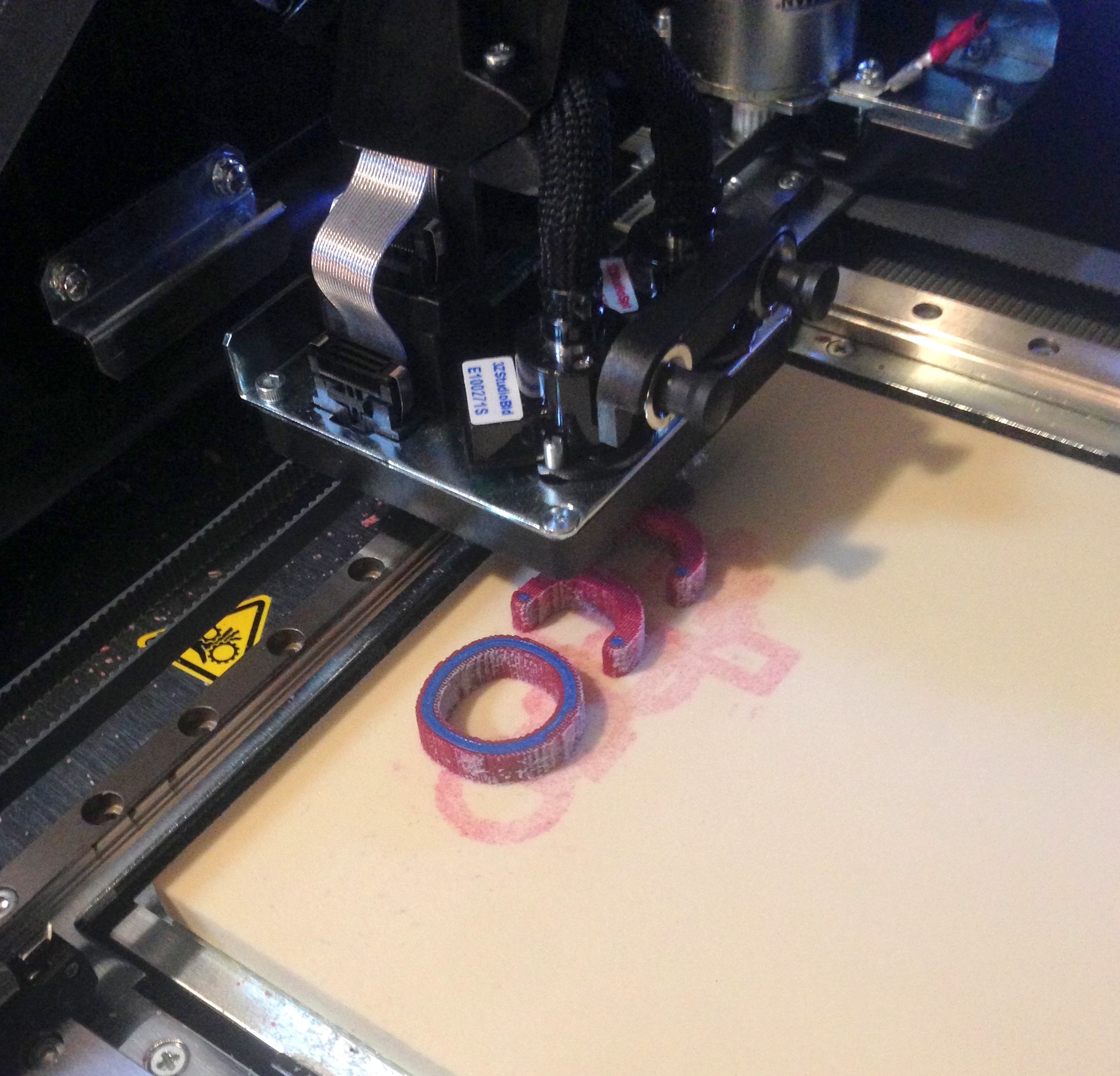
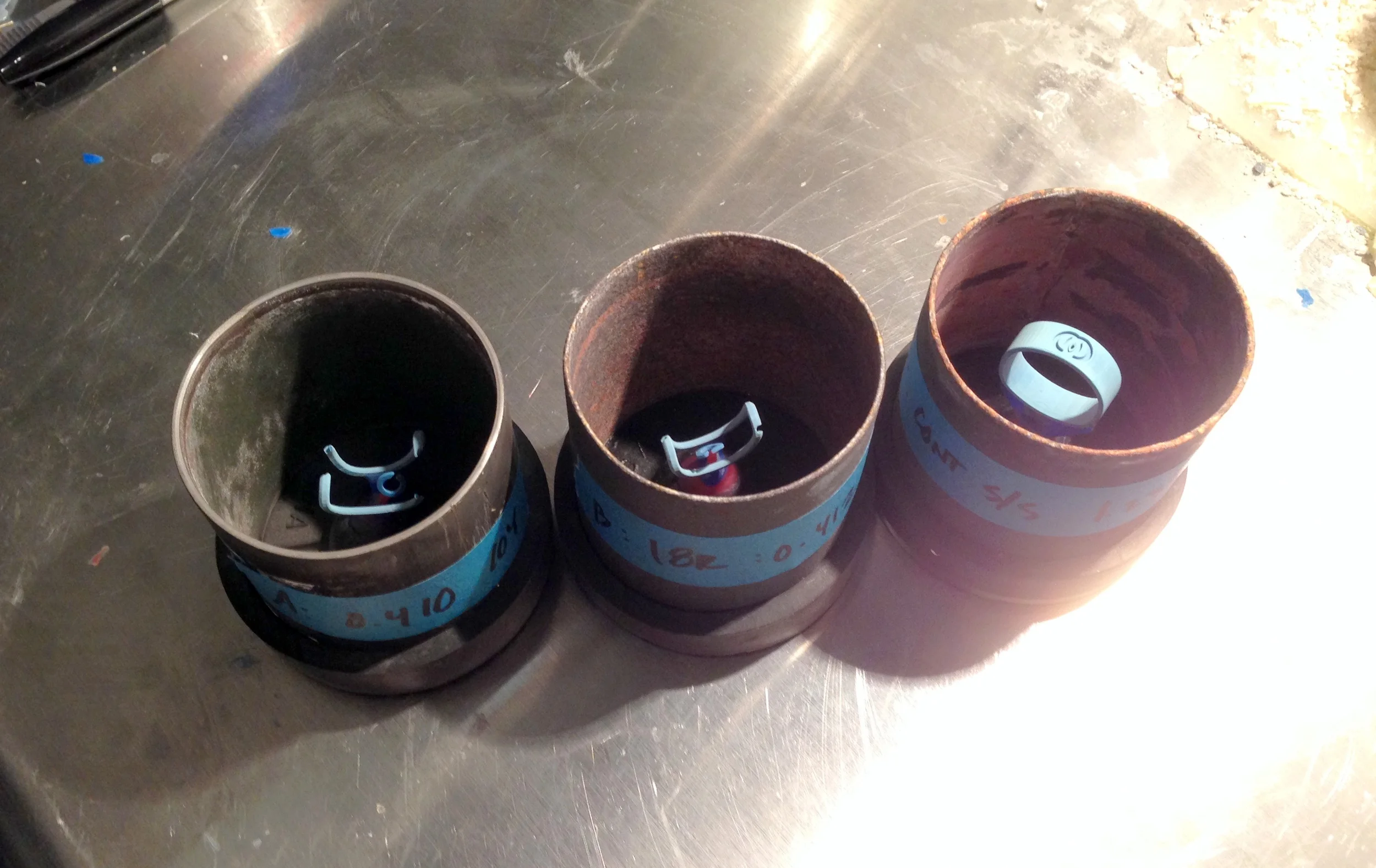
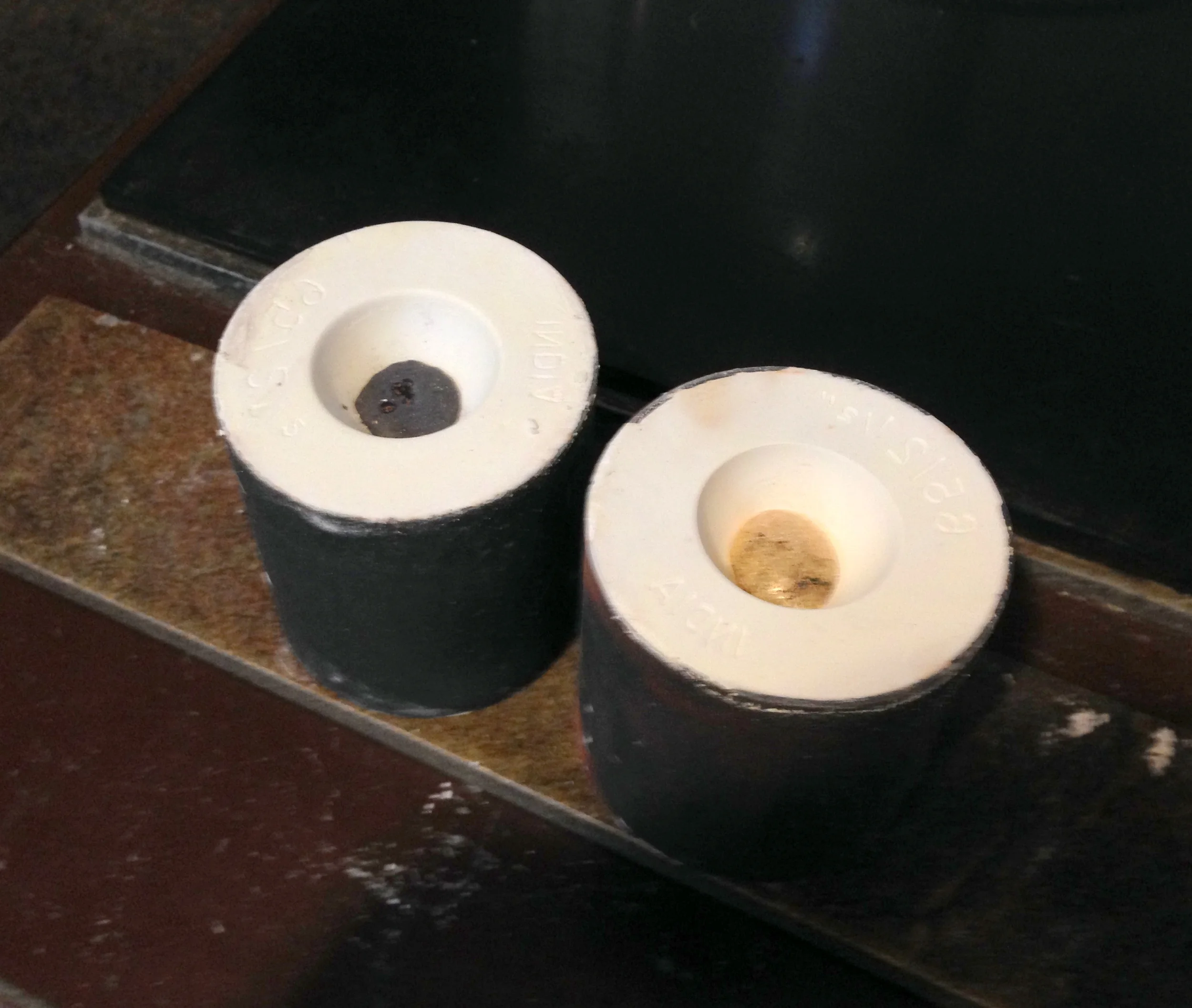
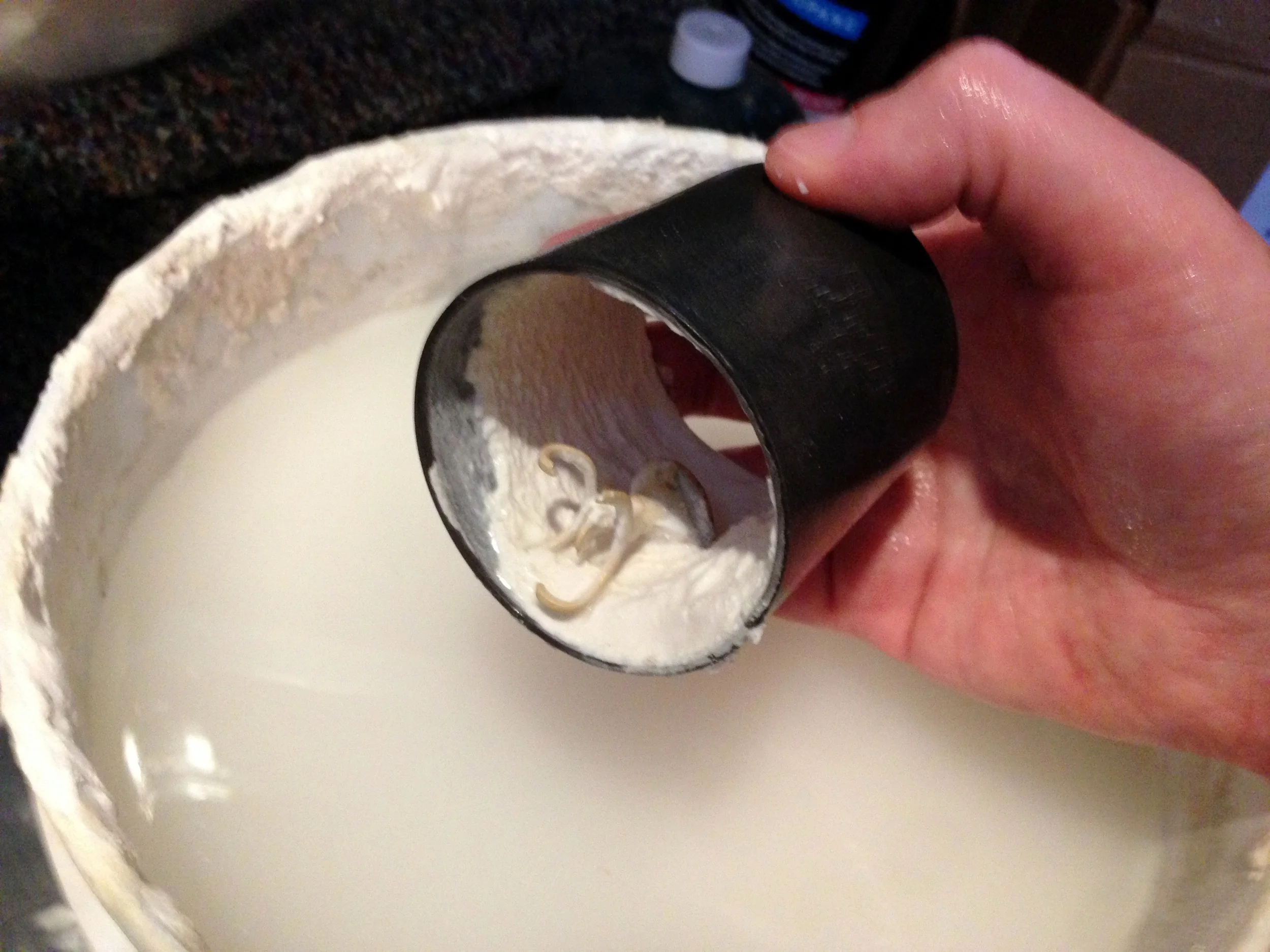
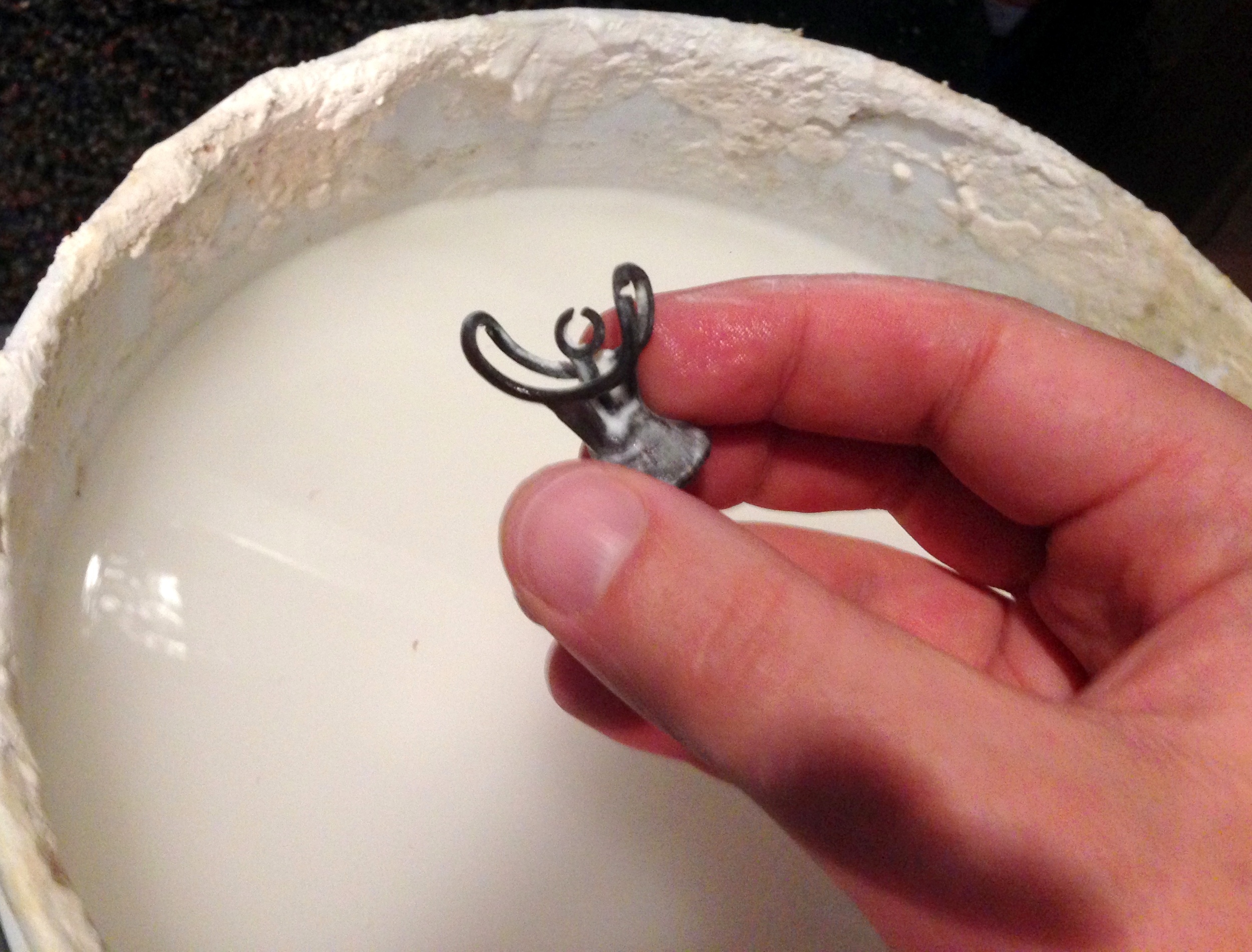
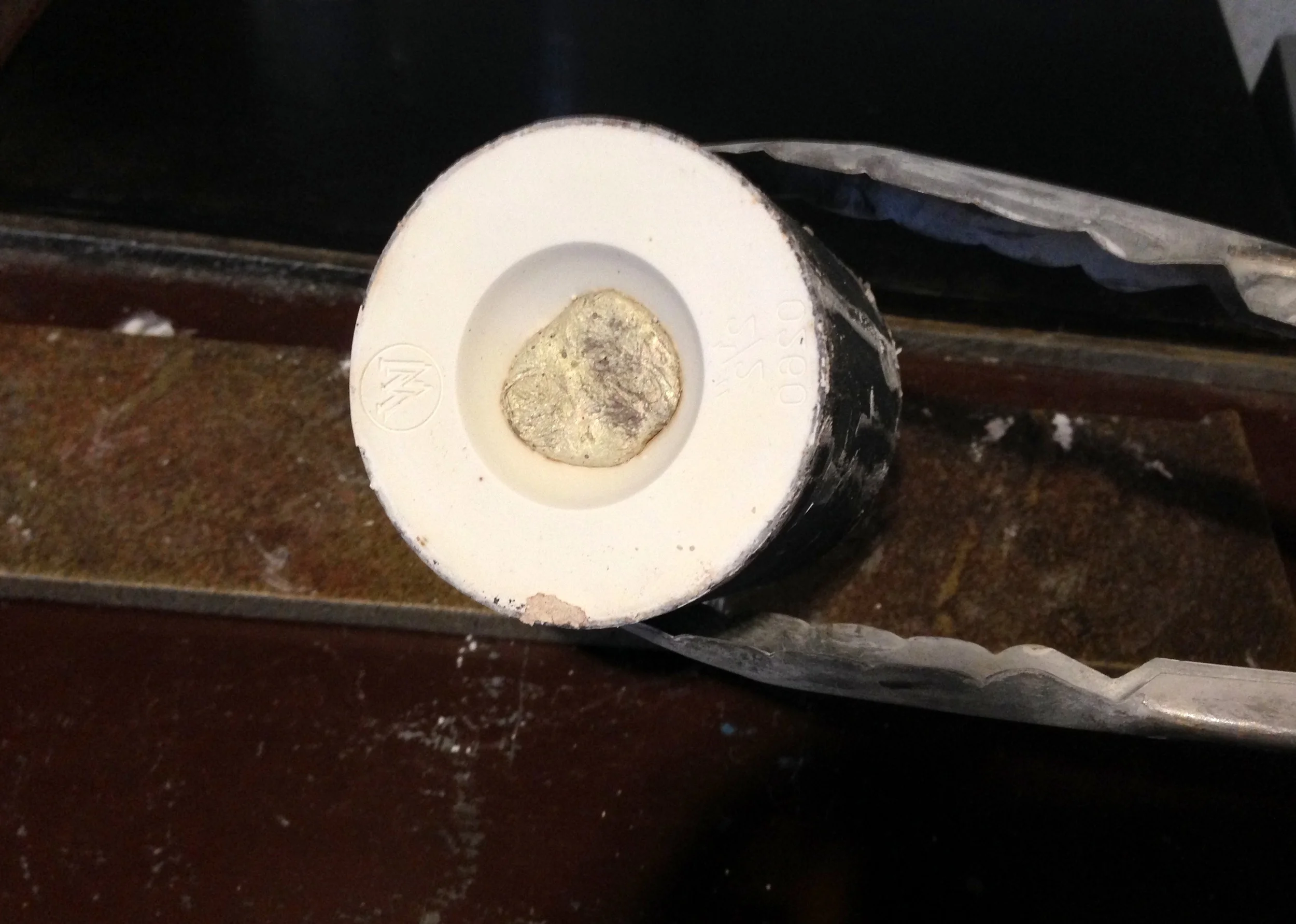
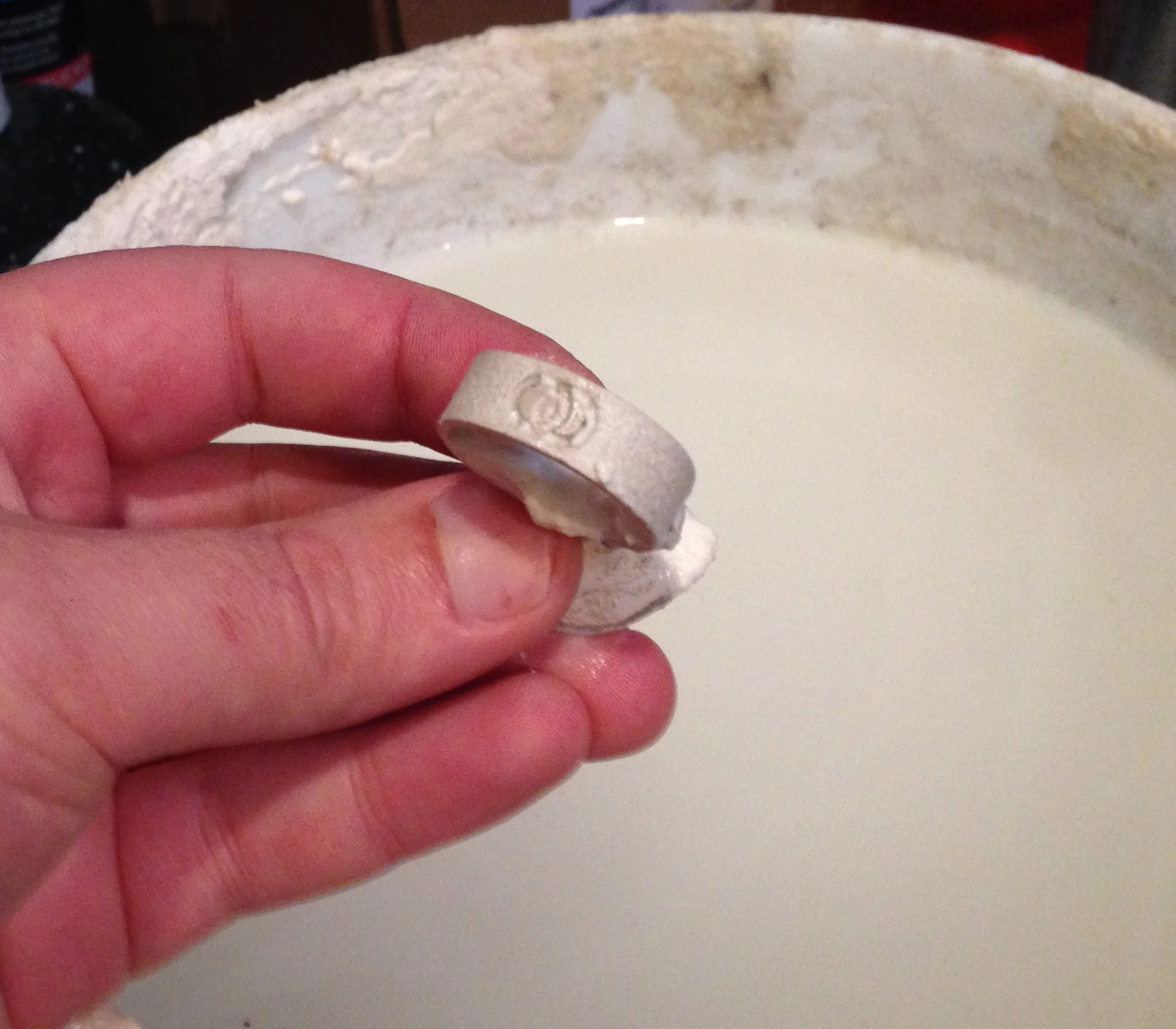
Your Custom Text Goes HEre
Two halves of Sarah's ring and Adam's band printing on 3-d printer
Printed models set up in flasks
Investment is poured into the flasks over the wax models. Once the investment hardens, the flasks are put into the kiln. The wax models melt out of a hole in the flasks once the temperature rises in the kiln, leaving a negative space that is the shape of the wax model.
Flasks for Sarah's ring after metal pour
The flasks are then put into the casting machine, which pours the correct type of metal into the hole in the flask. The metal fills the negative space that was created in the kiln, creating the rough casting of the ring.
Gold casting after quenching
The flask is then quenched in water to bring the temperature down, causing the investment to boil away. We are left with the rough casting inside.
Rough casting of the other half of Sarah's ring
Sometimes cast pieces are coated in black oxidation after casting. In this case, the 18k red alloy contains copper which is more prone to oxidation. The rosy hue from the copper is visible once the oxidation is removed in the cleaning process.
Flask for Adam's ring after metal pour
Rough casting of Adam's ring